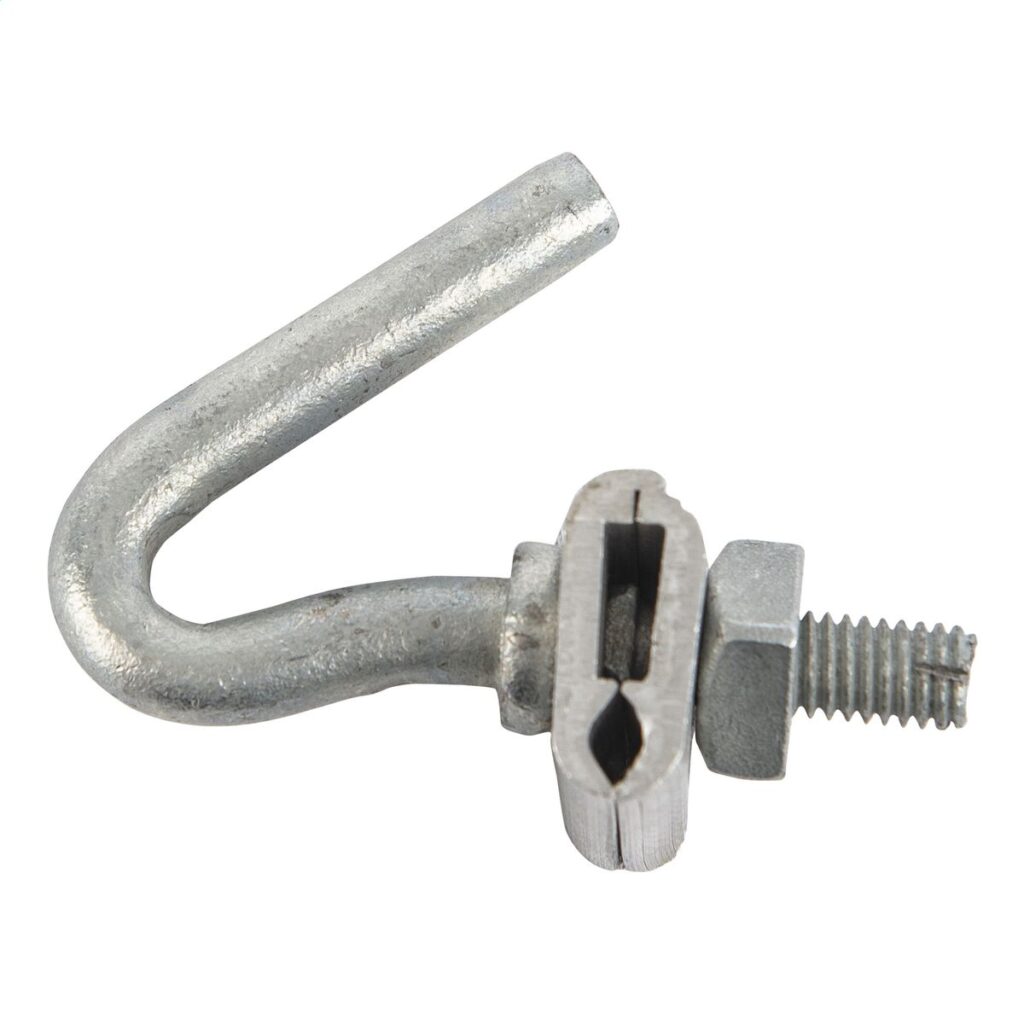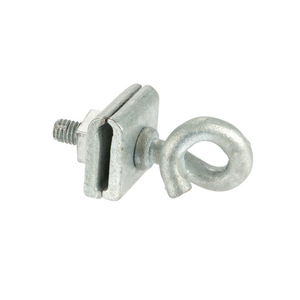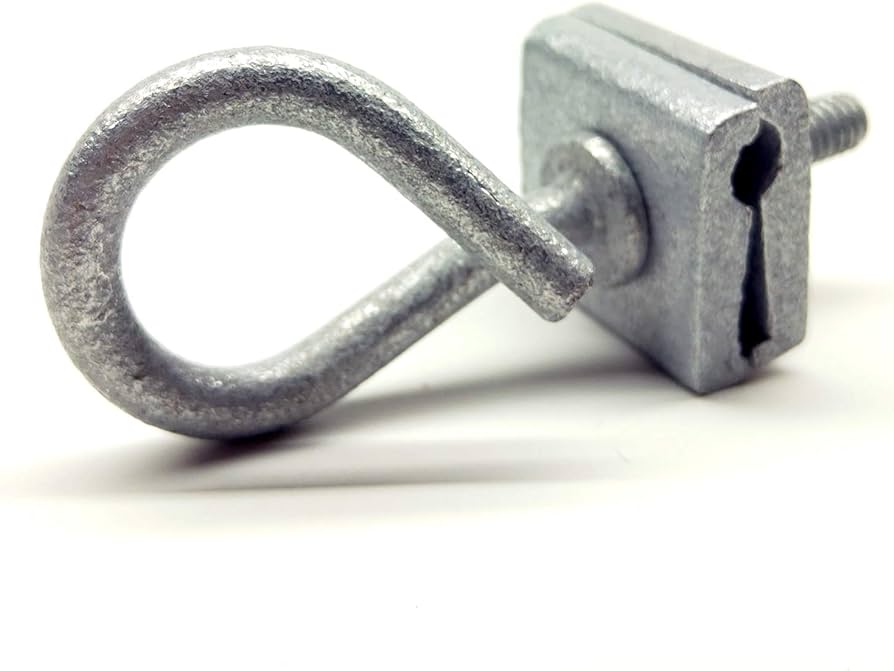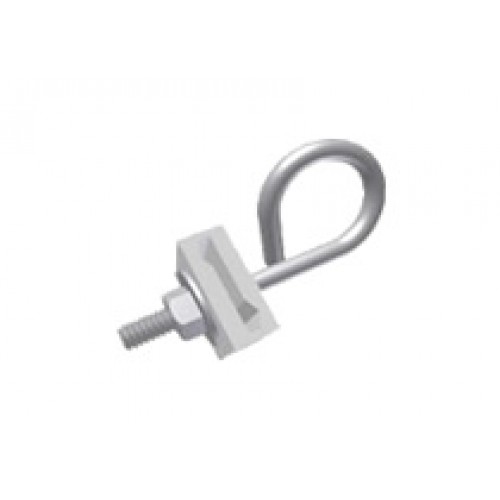
A span clamp is a hardware device used in aerial construction to secure drop wires to a main line at mid-span. It provides a safe and reliable attachment point for the drop wire. This is to prevent it from sagging and moving from external forces such wind and rain. Span clamps are available in different designs to accommodate specific applications. Span clamps distribute the weight of the conductor across the span and reduce stress on structures. The designs include C-type span clamps, E-type span, O-type span clamp and Q-type clamps. They also have simple installation features such as grooves of locking mechanisms. These features help to ensure ease of installation. Use of span clamps provide a safe and reliable attachment point for drop wires, prevent the cable from moving and reduce vibration in the cable.
Materials used in the construction of span clamp
Span clamps are from various durable materials that help to prolong their service life. The material selected depends on factors such as application, environment and specific requirements. Different materials of span clamps cater to a wide range of applications and customer needs. The common materials used are as follows.

- Steel – this is a material for span clamps that offers strength, durability and affordability. Steel categorises into various types based on its composition and properties. These include carbon steel, stainless steel and galvanized steel. steel material costs higher than other materials.
- Aluminum – this is also popular especially in areas where weight is a concern. Span clamps from aluminum are lightweight, non-corrosive and have good conductivity. This makes them suitable for use in overhead electrical installations.
- Bronze – the clamps work in applications where high strength and corrosion resistance are necessary. They are expensive compared to aluminum clamps but offer superior corrosion resistance.
- Composite materials – these include materials like fiberglass-reinforced polymers. The material offers various advantages. These include high strength-to-weight ratio, corrosion resistance and electrical insulation properties. They work in applications that need light weight, conductivity and corrosion resistance.
- Plastics – this is including plastics such as nylon or polyethylene. They are lightweight, non-corrosive and offer good insulating properties. Plastic span clamps work in low-voltage electrical installations.
Common properties of span clamp
Span clamps have designs to have certain properties that make them suitable for their intended application. The properties help them to support electrical conductors or cables in overhead installations. Additionally, it is advisable to consult with experts to ensure reliability, safety and performance. The following are the common properties for span clamps.

- Strength – span clamps should provide strength to support the weight of electrical conductors. The clamps should withstand mechanical stresses including tension, compression and bending without failure.
- Conductivity – the clamps need to provide electrical conductivity with insulation properties. Conductive span clamps ensure electrical continuity between conductors. Insulated span clamps prevent electrical contact between conductors and support structures. This is to reduce the risk of electrical faults.
- Ease of installation – span clamps should have easy designs for simple installation with minimal tools. They should have feature such as adjustable designs or pre-installed hardware. the features help to simplify the installation.
- Corrosion resistance – the clamps used in outdoor environments should have corrosion resistant properties. This is to prevent rusting and degradation over time. This requires materials such as galvanized steel, stainless steel, aluminum to composite materials.
- Durability – span clamps are from materials that provide durability and long-term performance. The materials should be resistant to corrosion, UV radiation and moisture.
- Compatibility – the clamps should be compatible with the different types and sizes of conductors or cables. They should have suitable dimensions, diameter ranges and load capacities. This is to hold specific requirements of the application.
- Adjustability – some of the clamps have adjustable designs that allow for fine-tuning the tension. This enables precise installation and optimization of the transmission lines performance.
- Compliance – the clamps should meet relevant industry standards, certifications and regulatory requirements. This is to ensure safety, quality and performance of the application.
Application areas of mid-span clamps
Span clamps help to maintain the structural integrity, tension and alignment of conductors. This is through distributing the weight of the conductor and preventing excessive sagging. The clamps also contribute to the reliability and performance of the system. The following are the common applications of the span clamps.

- Overhead transmission lines – span clamps support the conductors between suspension point or towers. They maintain the proper tension, prevent excessive sagging and ensure reliable power transmission.
- Distribution lines – distribution lines support and stabilize the conductors between poles. They also maintain proper clearance and prevent unnecessary strain on the conductors.
- Communication lines – span clamps work in communication lines installations like fiber optic cables. They also provide support and stability for these communication cables. This ensures uninterrupted transmission of signals.
- Railway electrification – span clamps work in railway electrification projects to support and stabilize contact wires. They help maintain the desired tension and alignment of the wires which ensures reliable power supply to electric trains.
- Renewable energy – the clamps find use in renewable energy installations such as wind and solar power farms. They help to support electrical cables and wiring between turbines or solar panels.
- Construction – the clamps also work in construction projects for temporary or permanent support of electrical cables and wiring.
Industry updates and advancements for span clamps
The industry for span clamps is improving in their performance, reliability and ease of use. The adoption of these advancements depends on factors such as cost, performance and regulatoins. These advancements help to improve the safety, reliability and efficiency of span clamps. Also, it is advisable to consult with experts for guidance on the updates on the selected span clamp. the following are the common advancements for span clamps.

- Smart clamps – this is the integration of sensors with the clamps. They could help to track factors such as tension, vibration and temperature. This helps to provide valuable data for predictive maintenance and improved grid management.
- Standards and regulations – different organizations keep on revising standards for span clamp design, testing and performance. They help to ensure global consistency and quality of the applications. Different regions may have specific regulations about the type and certification of the span clamp.
- Material innovation – this is the development of materials that are lightweight, corrosion resistant and has high strength-to-weight ratio. There are improvements in corrosion-resistant coatings that offer enhanced protection and longer lifespans.
- Recyclable materials – the manufacturers are exploring the use of recycled materials. This is to reduce their environmental footprint and implementing eco-friendly practices during manufacture.
- Design enhancements – this includes innovative designs such as self-adjusting clamps, anti-vibration designs and ease of installation. These designs help to adjust tension, reduce vibration and improve conductor stability.
- Customization – increased demand for customized solutions help to meet specific project requirements. They also help to address unique challenges that help drive innovation in the design and manufacturing of span clamps.
Technical specifications for span clamps
The technical specifications for span clamps vary depending on various factors. These include the application, conductor size, load capacity and manufacturer. Assessing the technical specifications ensure the span clamp meets the specific requirements of the application. Additionally, it is important to review and consider the specifications when selecting span clamps. The following are the common specifications for span clamps.
| Model No. | Product descriprion |
| RGP-OSA-502A1 | Q Span Clamp, Galvanized Steel, 1.61″x1.96″x3.25″ |
| RGP-OSA-502A2 | Pole Drop Cable Hook, Galvanized Steel, 2.36″x2.36″x2.55″ |
| RGP-OSA-502A3 | Drop Cable Hook With Screw, Galvanized Steel, 1.57″x2.95″x3.15″ |
| RGP-OSA-502A4 | Drop Cable Q Span Clamp, Galvanized Steel, 0.98″x2.36″x2.83″ |
| RGP-OSA-502A5 | FTTH Ring Retractor, Galvanized Steel, Φ7×4.33″ |
| RGP-OSA-502A6 | FTTH Pole Loop, Galvanized Steel, 2.36″x2.75″x12.59″ |
- Size and diameter range – the size and diameter range of the span clamps indicates the range of conductor diameters.
- Adjustability – this includes details about the span clamps such as adjustable tension mechanism or mounting options.
- Corrosion resistance – this is details about the corrosion resistance properties of the span clamp. it includes any protective coatings or treatments applied to the surface.
- Installation requirements – this includes instructions for the proper installation of the span clamp. This is including recommended mounting hardware, torque specification for fasteners and any installation procedures.
- Environmental compatibility – the specs should highlight information about the environmental compatibility of the span clamp. this is including resistance to UV exposure, moisture, chemicals and other environmental factors.
- Material – the specifications should provide information about the materials used in the construction of span clamps.
- Load capacity – this is the greatest load or weight the span clamp can support without failure or deformation.
Frequently asked questions
A span clamp is a device used to support and secure electrical conductors, cables or wires between two points. Its purpose is to provide a secure attachment point for the conductor while spanning a certain distance between support structures.
Consider the material, size and diameter, design, quantity, brand, certifications, supplier and distribution channel.
